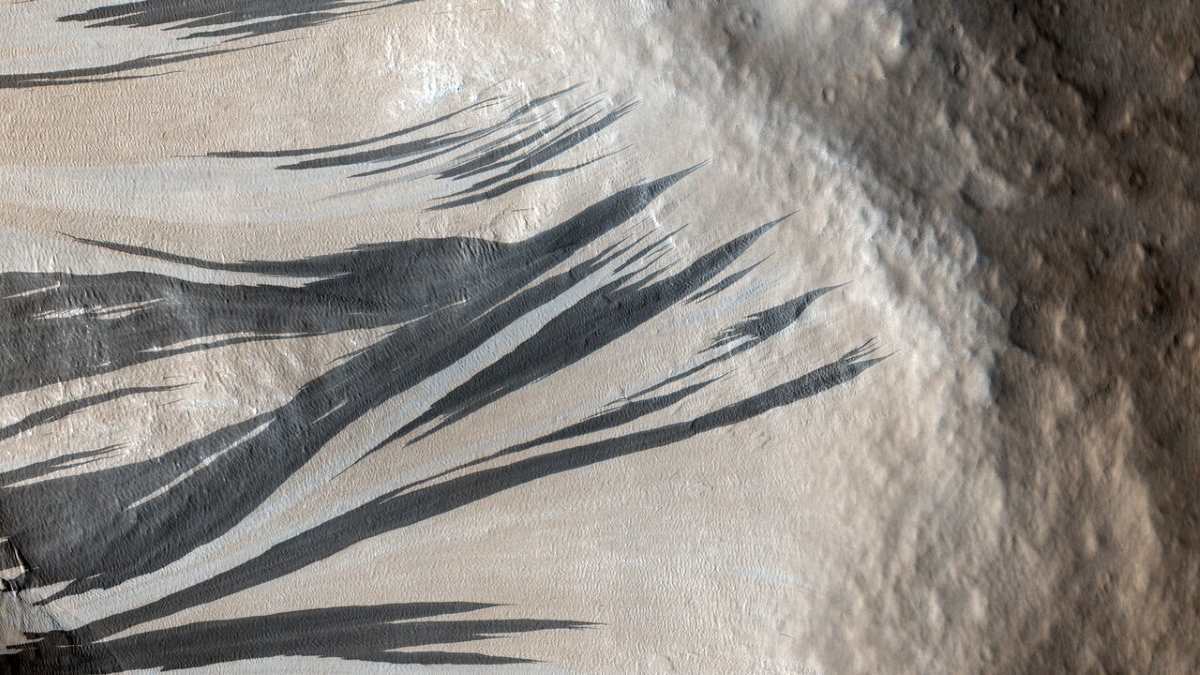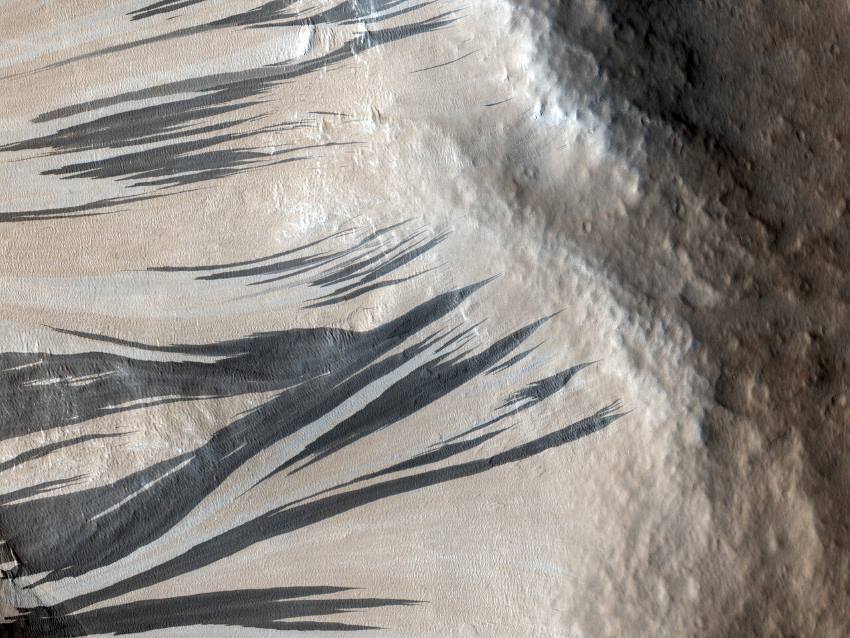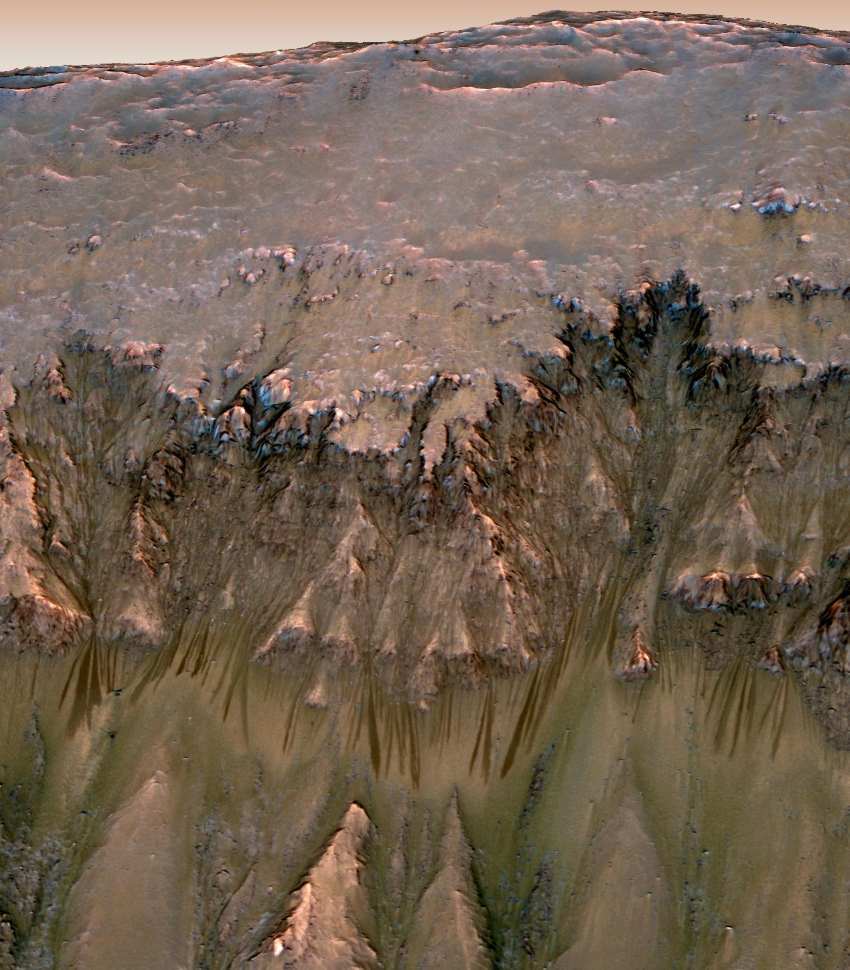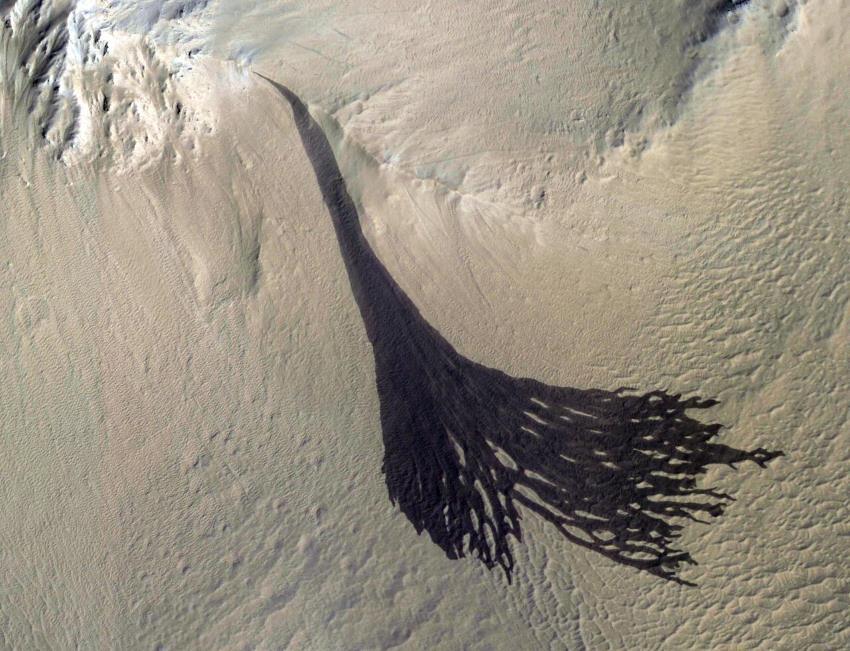20.05.2025

Slope streaks in the Acheron Fossae of Mars. Credit: HiRISE, MRO, LPL (U. Arizona), NASA

Slope streaks in the Acheron Fossae of Mars. Credit: HiRISE, MRO, LPL (U. Arizona), NASA
Dark streaks of unknown origin which appear spontaneously on Martian slopes before fading slowly over years to decades have puzzled planetary scientists since they were first observed in the late 1970s.
These odd features, known as slope streaks, are generally darker than their surroundings and extend for hundreds of meters down steep terrain.
In 2011 astronomers discovered new shorter-lived features, known as recurrent slope lineae, or RSL, kicking up discussions around whether they are caused by dust or something far more precious – liquid water.
A new study in Nature Communications may have finally put the decades-old debate to rest.
“A big focus of Mars research is understanding modern-day processes on Mars, including the possibility of liquid water on the surface,” says Adomas Valantinas, from Brown University in Rhode Island in the US, who coauthored the research.
Some researchers think that slope streaks and RSL are caused by transient flows of liquid water. Hypothetically, small amounts of water sourced from buried ice, subsurface aquifers or abnormally humid air, could mix with enough salt to create a briny flow even on the frozen Martian surface.
Others aren’t convinced, and contend the streaks are caused by dry processes like rock falls or wind gust.

An image combining orbital imagery with 3-D modeling shows recurrent slope lineae (RSL) that appear in spring and summer on a slope inside Mars’ Newton crater. Credit: NASA/JPL-Caltech/Univ. of Arizona
“Our study reviewed these features but found no evidence of water. Our model favours dry formation processes,” says Valantinas.
To investigate this Valantinas and co-author Dr Valentin Bickel, a researcher at the University of Bern in Switzerland, used a machine learning algorithm to catalogue as many slope streaks as possible.
They trained the algorithm on decades’ worth of confirmed slope streak sightings and then used it to analyse more than 86,000 high-resolution satellite images.
This created the first global catalogue of half a million individual slope streaks.
“Once we had this global map, we could compare it to databases and catalogues of other things like temperature, wind speed, hydration, rockslide activity and other factors,” says Bickel.
“Then we could look for correlations over hundreds of thousands of cases to better understand the conditions under which these features form.”
Their results revealed that slope streaks and RSLs are more likely to form in places with above average wind speed and dust deposition — factors that point to a dry origin.

Slope streaks on Mars. Credit: NASA/JPL/University of Arizona
Neither are associated with factors that suggest a liquid or frost origin, such as a specific slope orientation, high surface temperature fluctuations or high humidity.
And despite slope streaks and RSL resembling each other visually, they are likely caused by different processes.
They conclude that streaks most likely form when layers of fine dust suddenly slide off steep slopes, though what triggers this may vary. For example, they appear more common near recent impact craters where shockwaves might shake loose surface dust.
RSLs are more often found in places where rockfalls and dust devils – whirlwinds of dust and grit – are frequent.
“Our findings suggest that Martian slopes currently do not experience seasonal, transient flows of liquid water or brines, underscoring the dry, desert-like nature of Mars,” the authors write.
“This implies that slope streak and RSL locations are not likely to be habitable, alleviating strict planetary protection measures for future landed missions to those regions.”
Quelle: COSMOS
